Study Guide
Patellar Fractures
Key Points:
- Osseous patellar fractures are generally caused by direct blows, and are treated similar to adult patella fractures
- Patellar sleeve fractures are generally caused by indirect mechanisms, and one needs a high level of suspicion to diagnose these injuries
- Although only a small bony fragment is seen in patellar sleeve fractures, a significant cartilaginous component exists and operative fixation is generally recommended
Description:
The patella is the largest sesamoid in the body. Ossification typically begins by age 6 and continues into the second decade. Patella fractures are relatively rare. Osseous fractures caused by a direct blow typically result in adult type vertical or transverse fractures. Indirect fractures occur as a result of a forceful quadriceps contraction, and in skeletally immature patients, generally lead to patella sleeve fractures in which a small osseous fragment and sleeve of periosteum/perichondrium and cartilage is disrupted from the osseous patella.(Houghton 1979)Epidemiology:
Patella sleeve fractures are most common in children aged 8-16 years, and are more likely to occur during adolescence. More than half of patella fractures in skeletally immature patients are patella sleeve fractures. (Hunt 2005)Clinical Findings:
Osseous fractures present with a knee effusion, point tenderness at the fracture site, and the inability to extend the knee fully without pain. Patella alta is frequently present as well.Imaging Studies:
AP/lateral radiographs demonstrate the fracture configuration. CT and MRI are generally not required, but may be useful in planning surgery for comminuted fractures or to detect osteochondral fragments.Treatment:
Treatment principles are similar to management of these fractures in adults. Fractures that are displaced require open (operative) management to restore function of the extensor mechanism.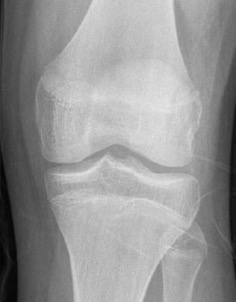
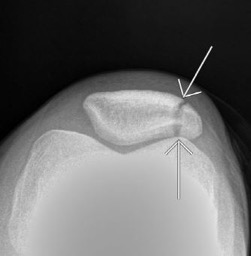
14 yo fell onto knee one month prior to these Xrays
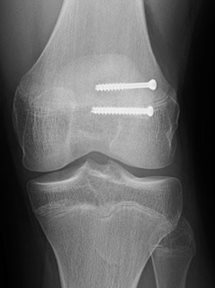
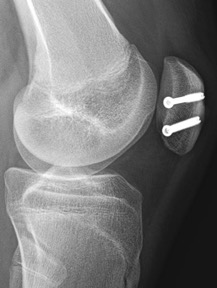
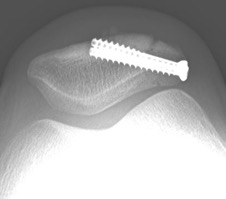
6 months after open reduction and internal fixation
Complications:
Related Videos:
References:
- Gettys FK, Morgan RJ, Fleischli JE. Superior Pole Sleeve Fracture of the Patella. Am J Sports Med 38(11):2331-2336, 2010.
- Grogen DP, Carey TP, Leffers D, Ogden JA. Avulsion Fractures of the Patella. J Pediatr Orthoped 10: 721-730, 1990.
- Houghton GR, Ackroyd CE. Sleeve fractures of the patella in children. J Bone Joint Surg Br 61:165-168, 1979.
- Hunt DM, Somashekar N. A review of sleeve fractures of the patella in children. The Knee 12:3-7, 2005.
- Maripuri SN, Mehta H, Mohanty K. Sleeve fracture of the superior pole of the patella with an intra-articular dislocation: a case report. J Bone Joint Surg Am 90(2):385-389, 2008.

